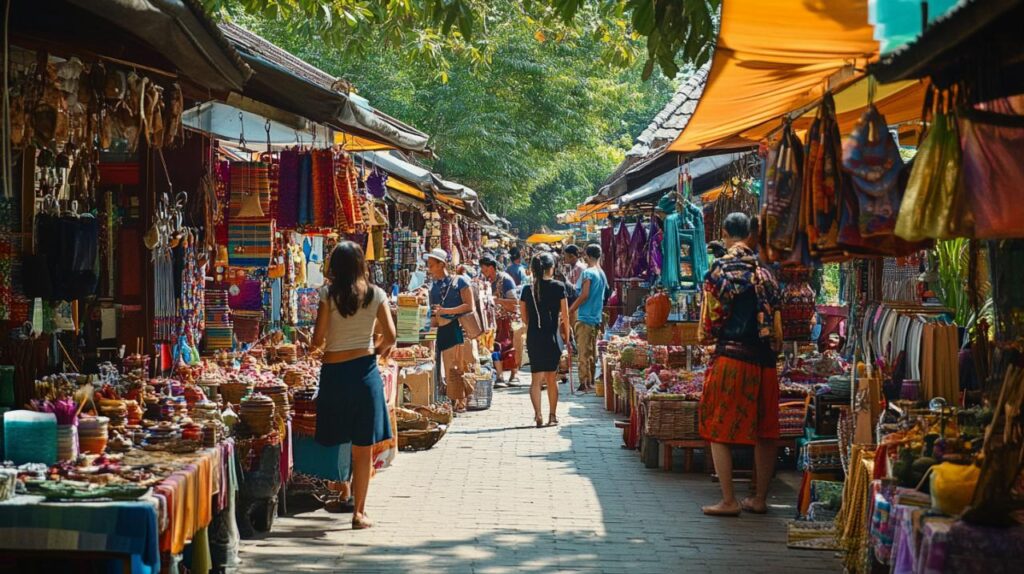In recent years, the way we live, work, and connect with one another has dramatically shifted the landscape of cultural heritage and craft markets. These vibrant spaces, once solely repositories of tradition, have become dynamic meeting points where old-world craftsmanship intersects with contemporary values and expectations. From the bustling stalls of local artisan fairs to the curated offerings at heritage festivals across Europe, these markets are evolving in response to the preferences and priorities of today’s consumers. Understanding how modern life trends and habits are reshaping what we buy, why we buy it, and how we engage with makers offers a fascinating glimpse into the broader cultural movements defining our era.
How contemporary living shapes what we buy at heritage markets
The Rise of Conscious Consumerism and Authentic Experiences
Today’s shoppers are increasingly discerning, seeking more than just a transaction when they visit craft markets and cultural heritage festivals. There is a palpable desire for authenticity, a yearning to connect with the story behind each handmade object. This shift reflects a broader cultural moment in which environmentally conscious consumers are rejecting mass production in favour of items that carry meaning, history, and a lighter environmental footprint. Handcrafted objects, often made using renewable resources and techniques passed down through generations, offer a tangible antidote to the throwaway culture that has dominated recent decades. The appeal lies not only in the uniqueness of each piece but also in the knowledge that purchasing such items supports the livelihoods of artisans and preserves generational knowledge. As sustainability becomes a guiding principle for many, the handmade goods found at local markets resonate deeply, embodying values that align with a more thoughtful and deliberate way of living.
Moreover, the experience of visiting these markets has become as important as the products themselves. In an age where digital interactions often overshadow face-to-face connections, the opportunity to meet makers, hear their stories, and witness their craft in action offers a refreshing change. Local markets serve as hubs for cultural activity, fostering personal connections between artisans and buyers that are seldom replicated in online shopping or large retail environments. These encounters enrich the purchasing process, transforming it into an educational and emotionally resonant experience. Workshops and demonstrations further enhance this engagement, allowing visitors to appreciate the skill and patience required to create each piece. This human connection, so often missing in our increasingly digital world, is a powerful draw, reminding us of the value of community and the importance of preserving cultural heritage.
Digital natives discovering physical craft spaces
Paradoxically, the generation most immersed in technology is also leading the charge in rediscovering the tactile and the tangible. Digital natives, who have grown up with smartphones and social media, are increasingly drawn to the physicality and authenticity of craft markets. For many, these spaces offer a counterbalance to the endless scroll of curated images and algorithmically generated content. There is something profoundly satisfying about holding a hand-thrown ceramic mug or admiring the intricate stitching on a piece of embroidery that cannot be replicated through a screen. This craving for real-world experiences is reflected in the popularity of heritage festivals and artisan fairs, which attract younger audiences eager to engage with traditional crafts in person.
Digital platforms, however, have not been left behind. Instead, they have become vital tools in bridging the gap between the physical and the virtual. Online platforms enable artisans to reach global audiences, showcasing their work and sharing the stories behind their craft to a wider public. Social media, in particular, has played a transformative role in popularising traditional crafts, with platforms allowing makers to document their processes, connect with potential customers, and build communities of enthusiasts. Contemporary British creatives, for instance, are reimagining old traditions by blending heritage with innovation, using digital art and online storytelling to breathe new life into historical narratives. This synergy between the digital and the physical enriches both realms, ensuring that traditional craftsmanship remains relevant and accessible in a rapidly changing world.
Key Trends Driving Engagement with Handmade and Cultural Products
Sustainability and the Return to Artisan Quality
The environmental crisis has prompted a fundamental rethinking of how we produce and consume goods. In this context, the handmade movement has emerged as a beacon of sustainability. Handcrafted objects, by their very nature, tend to have a lower carbon footprint than mass-produced alternatives. Artisans often work on a small scale, using locally sourced materials and time-honoured techniques that minimise waste and energy consumption. This approach not only reduces carbon emissions but also promotes the use of renewable resources, aligning with the priorities of environmentally conscious consumers. The durability and quality of handmade goods further contribute to their sustainability, as these items are designed to last rather than to be discarded after a season.
Beyond environmental considerations, there is a growing appreciation for the artisan quality that defines handmade products. In an era dominated by machine-made substitutes, the craftsmanship and attention to detail evident in a hand-carved piece of furniture or a meticulously woven textile stand out. Each imperfection tells a story, a testament to the human hand and the skill honed over years of practice. This return to artisan quality reflects a broader cultural shift towards valuing things that are made with care and intention. Supporting local crafts fosters community pride and helps preserve the generational knowledge that might otherwise be lost. Educational programmes and workshops play a crucial role in this effort, helping younger generations appreciate traditional art and ensuring that these skills are passed on. Governments and organisations have also recognised the importance of craftsmanship, offering financial aid, training, and marketing support to help artisans thrive in a competitive marketplace.

Social media’s role in popularising traditional crafts
Social media has revolutionised the way we discover, share, and celebrate traditional crafts. Platforms that were once the domain of lifestyle bloggers and influencers have become powerful tools for artisans looking to reach new audiences. Through carefully curated posts and engaging storytelling, makers can showcase their work to millions, transforming local traditions into global phenomena. The visual nature of social media is particularly well-suited to the promotion of handmade goods, as it allows potential buyers to appreciate the beauty and detail of each piece before making a purchase. This democratisation of marketing has levelled the playing field, enabling small-scale artisans to compete with larger, more established brands.
The success of content creators who blend humour, fashion, and cultural commentary demonstrates the potential for social media to drive engagement with traditional crafts. By presenting these crafts in a modern, accessible context, influencers help demystify the world of artisan production and make it appealing to younger, digitally savvy audiences. Performance artists, too, are using digital platforms to offer fresh takes on traditional narratives, whether through dance, theatre, or multimedia installations. Urban heritage projects are revitalising public spaces, and digital storytelling is making historical materials more accessible than ever before. This fusion of old and new not only preserves cultural heritage but also ensures its continued relevance in a rapidly evolving cultural landscape. Designers drawing inspiration from historical British aesthetics and manufacturing techniques are finding that prioritising sustainability and craftsmanship resonates with consumers who value both tradition and innovation.
As we navigate the complexities of contemporary life, the role of cultural heritage and craft markets continues to evolve. These spaces offer more than just a place to buy beautiful objects; they provide a vital link to our shared past and a hopeful vision for a more sustainable, connected future. By embracing modern life trends and habits while remaining rooted in tradition, artisans and market organisers are creating experiences that resonate deeply with today’s consumers. Whether it is the allure of a handcrafted piece that tells a story, the opportunity to support local communities, or the simple pleasure of a human connection in an increasingly digital world, the appeal of these markets is undeniable. As festivals and tourism continue to promote cultural exchange and provide economic opportunities for artisans, the future of cultural heritage and craft markets looks bright, promising a world where tradition and innovation walk hand in hand.

